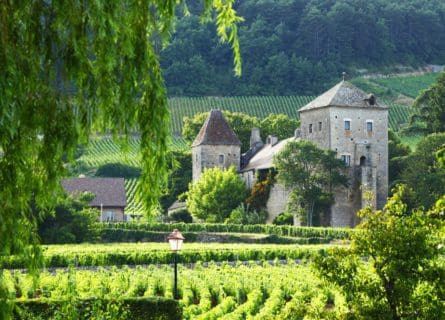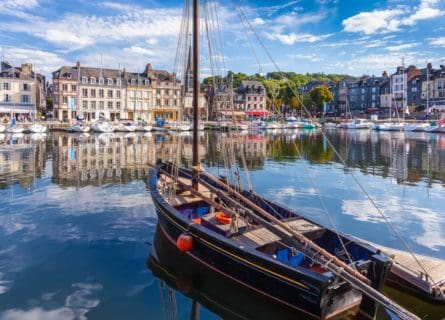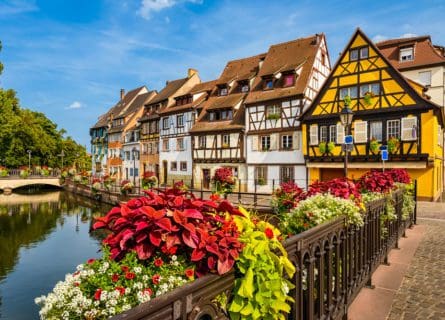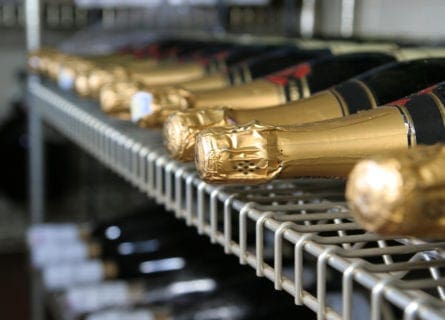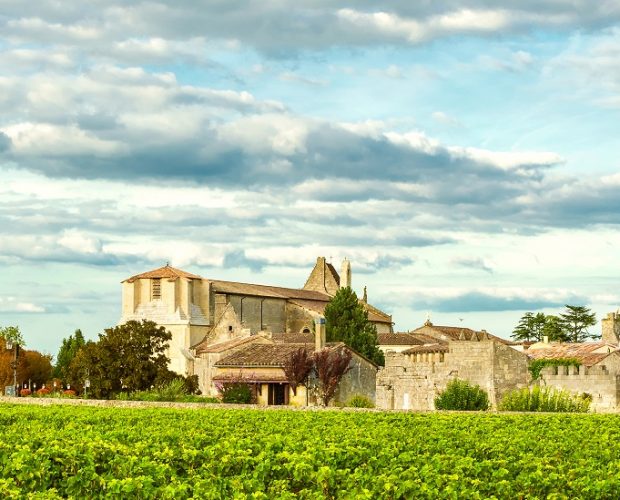
Perigueux Travel Guide
Discover Périgueux: Where Gourmet Indulgence Meets Tranquil History in the Heart of Dordogne
Fantastic food, excellent wine, heady history, and rolling countryside sum up the delightful Dordogne region. Long a favorite place for discerning travelers to enjoy rest and relaxation, Perigueux is understandably one of the most sought-after destinations along this tranquil and captivating stretch of river. It is the biggest (and busiest) city of the Dordogne departement, with a bustling commercial center and a surfeit of charming bars, cafes, restaurants, and shops. Indeed, it’s no secret that Perigueux has become the place to visit in summer.
Historically, there has been a settlement on the site of present-day Perigueux for over 200 years. Initially occupied by Gallic tribes, the Romans occupied the settlement during their conquest of Gaul. By the end of the third century AD, Perigueux (or Versunna, to give it its Roman name) was among the most important cities in Roman Gaul. Strategically important and prosperous, it was embellished with many civic amenities, including temples, baths, amphitheaters, and a forum. It was also heavily fortified to offer strong resistance against any opposing army.
Yet Roman rule in France was ultimately not to endure. In the 5th century, ongoing pressure from rival powers caused the collapse of the Western Roman Empire in 476. After that, France fell under the control of the Frankish Merovingian and Carolingian dynasties; their reign lasted over four centuries. However, despite the official fall of the Roman Empire, the Merovingians adopted many aspects of Gallo-Roman culture into their own, including the Christian religion.
Little is known about Perigueux during this time period – the next crucial historical event occurred in 1152, when Eleanor of Aquitaine married Henry of Anjou, bringing a further third of France under the control of the English crown – including the Dordogne and its towns and cities. It marked the frontier between the French and English forces during the Hundred Year’s War; the area is sometimes known as the ‘Land of 1001 Chateaux’ thanks to its abundance of historic castles. Eventually, after a seemingly endless struggle and much bloody fighting, French Monarch Charles VII marched triumphantly into Paris in 1437. However, it was not until 1453 that the English were almost entirely driven from French territory (except Calais).
The 16th and 17th centuries were hardly a more stable time for the inhabitants of Perigueux, yet the quieter periods saw a flourishing of impressive architecture; indeed, some of the finest Gothic and Renaissance residences were built in Perigueux—meanwhile, a burgeoning wealthy rural elite built over a thousand chateaux, manor and country houses.
Sadly, the Wars of Religion between the Catholics and Huguenots (French Protestants who received help from the English) saw much bloodshed across the region. At the time, the Dordogne area was a powerful stronghold of Huguenot resistance and the coastal city of La Rochelle. However, the ascendancy of the Roi Soleil (Sun King) Louis XIV did not help their cause; a staunch Catholic, he revoked the Edict of Nantes in 1685, which had guaranteed the Huguenots many civil and political rights, notably freedom of conscience.
In September 1792, France’s First Republic was declared by the radical Jacobins led by Robespierre, Danton, and Marat. The casualties were severe; Louis XVI and his wife were publicly executed – the reign of terror between September 1793 and July 1974 saw churches closed, cathedrals turned into “Temples of Reason,” and thousands incarcerated in dungeons in Paris’ Conciergerie before being beheaded.
But the Republic was not to last. A young Corsican general named Napoleon Bonaparte assumed power as Consul of the First Empire in 1799. However, Napoleon was ultimately exiled to the island of St Helena, and a Second Republic was declared in 1848. Napoleon’s nephew was initially proclaimed president, but he led a coup d’etat and proclaimed himself Emperor Napoleon III of the Second Empire in 1851. But, like his uncle, he embroiled France in various costly wars – the people revolted, and France’s third Republic was declared in 1870.
Despite a difficult start, the Third Republic ushered in the glittering belle epoque (beautiful age) with art-nouveau architecture and impressive advances in science and engineering, including constructing France’s first metro line in Paris. During this time, the Atlantic coast and the Dordogne became popular vacation destinations for wealthy Parisians.
The specter of the Two World Wars still haunts France to this day. Perigueux was relatively unaffected by the 1st World War, but during the Second World War, southern France fell under the control of the puppet Vichy regime, subordinate to the Nazis. The Vichy government was viciously anti-Semitic, and in 1940, many Jews living in Alsace were evacuated to Perigueux for their protection.
Contemporary Perigueux provides a fitting ode to the complex and turbulent history of the Dordogne region. Part modern city, history still seeps through the cracks: Roman remains, including a ruined temple and a luxurious provincial villa discovered in 1959, can be found in the suburbs of the old quarter, while medieval buildings and Renaissance mansions are dotted around the rabbit-warren city center. It all adds to a wonderful package of culture and hedonism for discerning visitors and is worth raising a glass to!
-

Pate de Foie Gras Gastronomy & Wine
Strictly speaking, the Dordogne is a departement, not a region: this part of France is better known to the French as the Perigord. It’s been divided into four color-coded areas for easy navigation: Perigord Vert (green), Perigord Noir (black), Perigord Pourpre (Purple), and Perigord Blanc (white) after the limestone hills that surround Perigueux. Each of the four sub-regions offers many gastronomic delights – this is a food culture that emphasizes tradition above all else. Indeed, traditional ingredients abound and end up in legendary dishes throughout France: stuffed goose neck, preserved goose and duck confits, foie gras, and truffles. The time-honored practice of preserving meats by cooking them slowly and lovingly in their own fat, then storing them in earthenware pots, is responsible for flavors that verge on the scandalous. Confit de Canard served with local wine, is quite extraordinary. The custom dates back to the time of the Moorish invasion of Spain.
Pate de Foie Gras will be seen everywhere on your trip to Perigueux – locals are justly proud of this venerable gastronomic delicacy. But even more revered is Perigord’s “black diamonds”; black truffles from the Perigord region are said to be the finest in France. It is a rare fungus, concealed beneath the shady oak trees, which produces a network of white threads at the soil’s surface – mycelium – allowing foragers to recognize it. Even a small shaving offers an incredibly concentrated and potent aroma and flavor. Walnuts and chestnuts are also highly prized, as is the pastis, the queen of local patisserie, made from paper-thin pastry and flavored with apples and Armagnac from neighboring Gascony.
Of course, all this superlative gastronomy deserves a good wine pairing; in this regard, the Perigord does not disappoint. The wine you’ll see everywhere is from Bergerac – a famous city and wine appellation. Reds are usually composed of Cabernet Sauvignon, Cabernet Franc, and Merlot, while the whites are blends of Semillon and Sauvignon Blanc, often with Sauvignon Gris or Muscadelle added. The sweet wines from Monbazillac are also justly revered, offering a nice alternative to Sauternes.
A Guide to the Gastronomy and Cuisine of Perigord: Read more
Nearby Wine regions
-
 Explore Bordeaux! Left Bank Cabernets, Right Bank Merlots. Find your dream bottle & plan your next tour! (with 2024 insights) Read more
Explore Bordeaux! Left Bank Cabernets, Right Bank Merlots. Find your dream bottle & plan your next tour! (with 2024 insights) Read more
Highlights
-
Cathedrale St-Font
Perigueux’s most distinctive landmark is this gorgeous 12th-century cathedral, known for its five Byzantine bump-studded domes (inspired by St Mark’s Basilica in Venice). The interior is laid out in a Greek cross, with the soaring domes supported by svelte arches.
-
Medieval quarter
Perigueux’s medieval quarter is north of the cathedral, a captivating tangle of cobblestone streets lined with haphazard houses and charming cafes.
-
La Cite
The remains of a once-thriving Roman outpost is located west of the city center. The ruins of the Roman amphitheater are particularly impressive – designed to hold over 30,000 baying spectators; it was one of the biggest structures in Gaul.
-
Musee de Perigord
The museum of Perigord houses archeological finds, including some fine Roman mosaics and unique examples of prehistoric scrimshaw.
Recommended for you
More information
If you would like us to customize an exclusive luxury tour, contact us and let us know your travel plans. We offer luxury food and wine tours for private groups of a minimum two guests. In addition, all of our private, chauffeured tours are available year-round upon request.



